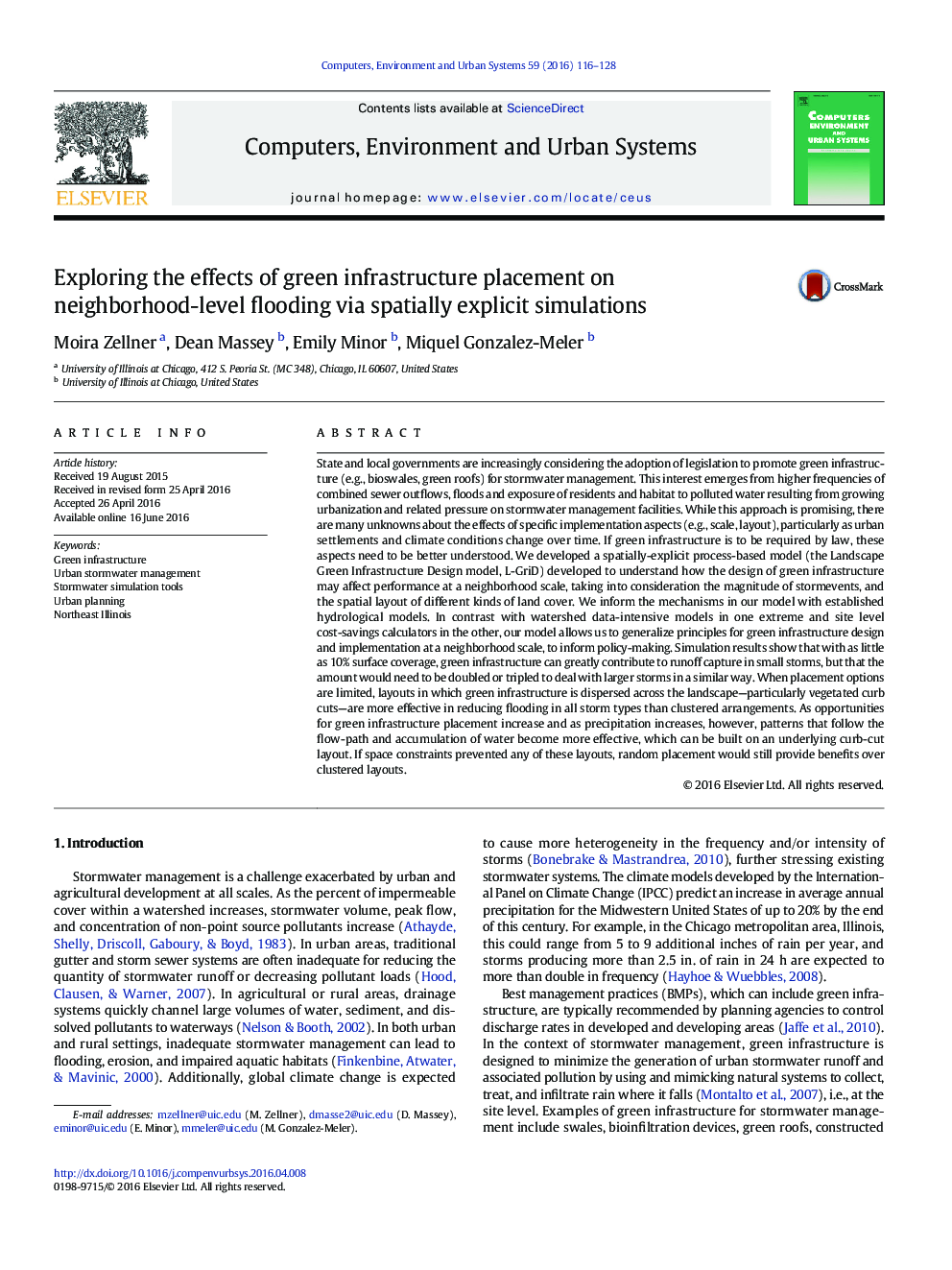| کد مقاله | کد نشریه | سال انتشار | مقاله انگلیسی | نسخه تمام متن |
|---|---|---|---|---|
| 506258 | 864883 | 2016 | 13 صفحه PDF | دانلود رایگان |
• We model stormwater flow in an urban area at the neighborhood scale.
• We study how green infrastructure layouts alleviate sewers and reduce flooding.
• Fairly low green infrastructure coverage can considerably reduce runoff.
• Dispersed placements containing curb cuts are more robust to storm type.
• Our model can test assumptions of green infrastructure design to inform policy.
State and local governments are increasingly considering the adoption of legislation to promote green infrastructure (e.g., bioswales, green roofs) for stormwater management. This interest emerges from higher frequencies of combined sewer outflows, floods and exposure of residents and habitat to polluted water resulting from growing urbanization and related pressure on stormwater management facilities. While this approach is promising, there are many unknowns about the effects of specific implementation aspects (e.g., scale, layout), particularly as urban settlements and climate conditions change over time. If green infrastructure is to be required by law, these aspects need to be better understood. We developed a spatially-explicit process-based model (the Landscape Green Infrastructure Design model, L-GriD) developed to understand how the design of green infrastructure may affect performance at a neighborhood scale, taking into consideration the magnitude of stormevents, and the spatial layout of different kinds of land cover. We inform the mechanisms in our model with established hydrological models. In contrast with watershed data-intensive models in one extreme and site level cost-savings calculators in the other, our model allows us to generalize principles for green infrastructure design and implementation at a neighborhood scale, to inform policy-making. Simulation results show that with as little as 10% surface coverage, green infrastructure can greatly contribute to runoff capture in small storms, but that the amount would need to be doubled or tripled to deal with larger storms in a similar way. When placement options are limited, layouts in which green infrastructure is dispersed across the landscape—particularly vegetated curb cuts—are more effective in reducing flooding in all storm types than clustered arrangements. As opportunities for green infrastructure placement increase and as precipitation increases, however, patterns that follow the flow-path and accumulation of water become more effective, which can be built on an underlying curb-cut layout. If space constraints prevented any of these layouts, random placement would still provide benefits over clustered layouts.
Journal: Computers, Environment and Urban Systems - Volume 59, September 2016, Pages 116–128
